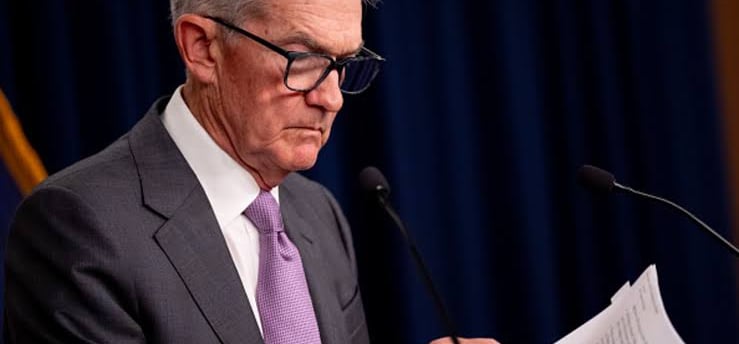Add your promotional text...
Federal Reserve Eyes Larger Rate Cuts as Labor Market Weakens
Synopsis: With job openings dropping more than expected in July, concerns over a rapidly weakening labor market have increased. Citi analysts suggest the Federal Reserve may introduce a 50 basis point rate cut in its upcoming September meeting, with another possible cut in November. As labor market data becomes the central focus for policy decisions, the Fed is expected to take more aggressive steps to combat the slowdown, particularly with key sectors like leisure, hospitality, and government jobs showing signs of a hiring slowdown.
MARKETSGLOBAL
By Alankrita Shukla
9/5/20242 min read


The possibility of a larger-than-anticipated 50 basis point rate cut at the upcoming Federal Reserve meeting later this month gained significant traction on Wednesday, according to an analysis by Citi. A steeper-than-expected decline in job openings has raised concerns that the labor market may face a sharper downturn than previously anticipated.
Labor Market Weakness Intensifies
In a detailed note, Citi analysts pointed out that the latest labor market data continues to highlight a growing softness. The current state of the labor market is weaker compared to pre-pandemic levels, and signs indicate that this trend is accelerating.
“Today’s report adds to the body of evidence that the labor market is not only looser than pre-pandemic but is continuing to cool and potentially now at a faster pace,” the Citi note mentioned. This weakening in the labor market is expected to have significant implications for monetary policy decisions moving forward.
Job Openings Decline More Than Expected
The most recent labor data showed that job openings in July dropped to 7.67 million from a downwardly revised 7.91 million in June, falling more sharply than forecasted. This change lowered the ratio of vacancies to unemployed individuals to 1.07-to-1, marking a decline below pre-pandemic levels.
This data underscores the Federal Reserve’s heightened focus on the labor market, with each subsequent update on employment becoming a critical factor in its monetary policy decisions. The labor market, more than any other metric, seems to be guiding the direction of interest rate cuts, particularly as inflation shows signs of stabilizing.
Key Implications for the Upcoming Jobs Report
The weaker job openings numbers come just days before the much-anticipated August jobs report, scheduled for release this Friday. Citi is forecasting that only 125,000 new jobs will be added in August, well below market consensus, coupled with an expected increase in the unemployment rate to 4.3%. The slowdown is being driven by diminished hiring across key sectors such as leisure, hospitality, and government jobs.
Citi’s analysts flagged significant “downside risks” in the leisure and hospitality sectors, where hiring activity remains depressed. Additionally, government hiring has slowed, contributing further to the overall softness in the labor market.
More Rate Cuts on the Horizon?
Citi’s analysis indicates that the September meeting may not be the only occasion where a substantial rate cut could come into play. The bank is forecasting that the Federal Reserve could implement another 50 basis point rate cut in November as labor market conditions are expected to deteriorate further.
The growing evidence of a softening labor market has shifted the economic landscape significantly, compelling the Federal Reserve to reconsider its stance on interest rates. The rapid pace at which job openings are declining raises questions about how aggressive the Fed will be in its response.
Conclusion: Eyes on the Fed and Labor Market
With the Federal Reserve’s next move closely tied to the ongoing labor market data, all eyes are on the upcoming economic reports. The combination of weaker job openings and lower-than-expected job growth could solidify the case for more aggressive rate cuts in the near future. Both the September and November meetings could see substantial policy shifts as the Fed looks to support a labor market at risk of a sharper downturn.
The economic environment remains fluid, but one thing is clear: the labor market is now the focal point for the Federal Reserve’s monetary policy strategy, and its weakening state could pave the way for further rate cuts in 2024.
